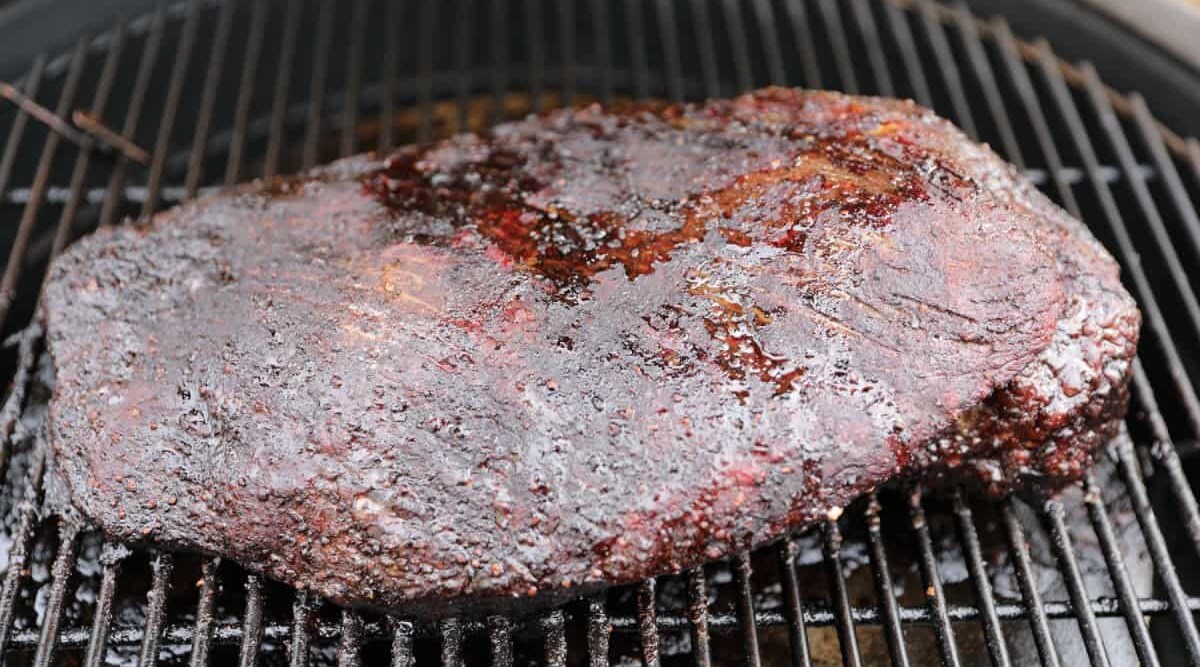
In this ultimate guide to the stall we answer all your questions including: What is the BBQ stall? What causes it? Can it be avoided, dodged, or minimized?
They say a watched pot never boils. This is, of course, not true — unless you forgot to turn the stove on. The point is it always feels like anything you’re waiting patiently for is never going to happen. Like expecting a package in the mail, or counting down to the first day of your vacation.
This feeling is all-too-familiar to anyone who likes to barbecue low ‘n’ slow or has a smoker. Whereas you can take a burger or steak from counter to grill to plate in mere minutes, something big like a rack of ribs or a brisket can be an all-day affair. Sure the results are worth it, but the anticipation is sweet agony.
And, just when you think you’re getting close to dining on succulent meat, it happens. The stall.
I have no data on this, but I’m sure the BBQ stall has caused more heart attacks, conniptions, and fits of rage than any other barbecue phenomenon.
Now, it’s time for me to quit stalling and get to the facts.
Jump to:
What is The BBQ Stall?
As if it wasn’t hard enough waiting hours for meat to smoke, you have to deal with the cruel phenomenon known variously as “the zone,” “the plateau,” and, most famously, “the stall.”
So what is it? It’s exactly what it sounds like.
When a large cut like a brisket or pork shoulder is smoking at low temperature, it will invariably heat up to about 150F and then stop.
It doesn’t matter that the smoker is set to 225F; that needle or digital readout ain’t moving. Or, if it does, it may actually drop a few degrees. Where’s the panic button???
How Long Does The Stall Last?
That’s the worst part — it seems like it’s never going to end.
The length of the stall depends on the size of the meat and a host of other variables. Many first-time smokers lose their minds and crank the heat, or transfer to a hot oven, and never see the back end of a stall.
A brisket stall or pork butt stall can last anywhere from 2-6 hours, but 4 is about average.
So, what on Earth could cause food in a hot grill or smoker to stop heating up?
Why Does the Stall Happen?
There have been numerous theories put forward over the years as to why the stall happens. They range from simple physics to alien abduction. (Ok, not really.)
The most likely candidates seemed to be collagen changing to gelatin inside the meat, fat rendering into a liquid state, or denaturing proteins.
The basis for these theories? That each process is heat-activated, therefore, steals heat from the cooking process. Once the suspect process ends, the heat can then go back to cooking.
Those are all very nice, scientific-sounding postulations.
Unfortunately, they’re all wrong.
The Real Science of The Stall
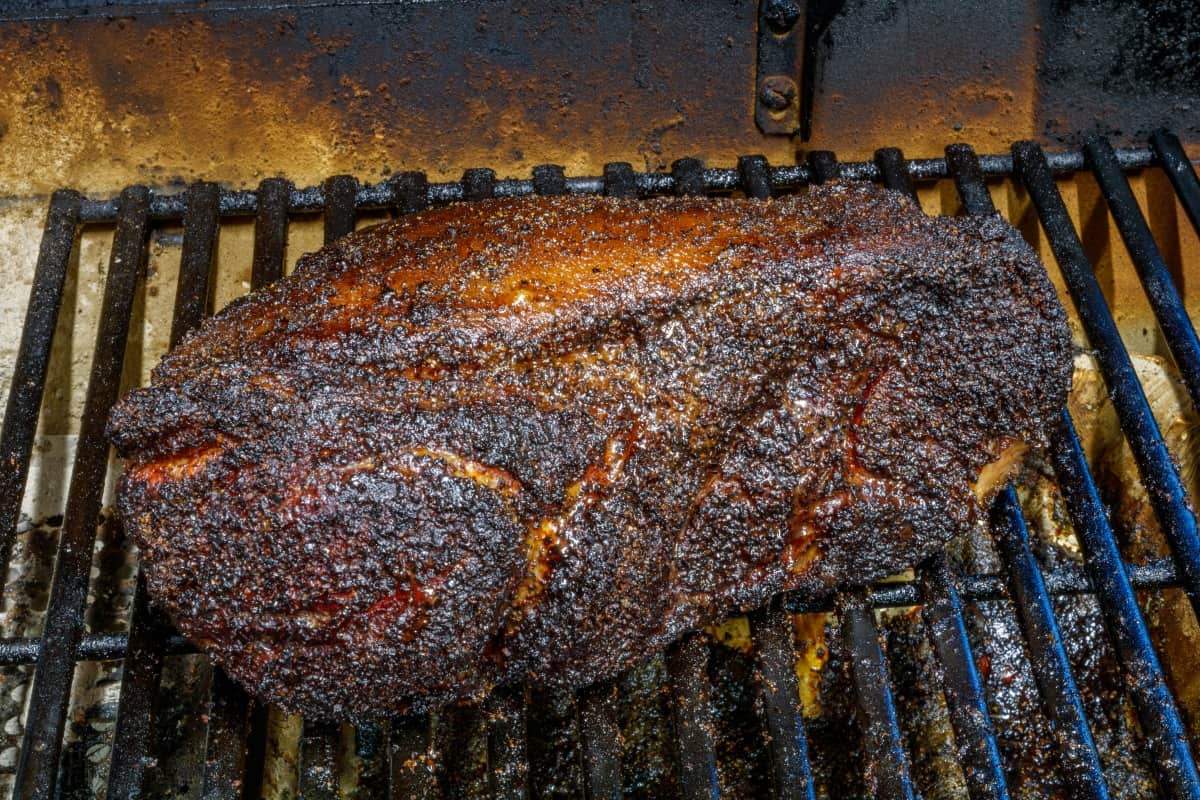
What’s actually going on is surprisingly simple. Put in the most basic terms, your meat is sweating.
As you no doubt know, your body sweats to keep you cool. The moisture on your skin evaporates, and evaporation causes cooling. The moisture on your skin absorbs heat from your body, and as it evaporates away, it takes some heat with it, cooling you. That’s why you can sit in a 180F sauna for 20 minutes without turning into bacon.
Of course, your meat is not trying to protect itself from the heat. It is quite dead. However, dead or alive, the physics are still the same. Moisture from the meat, in the form of retained water and other fluids, and liquefied fat, makes its way to the surface of the meat and evaporates in the heat.
The evaporation causes the surface of the meat to cool, or at least hold its temperature at a constant level, despite the higher temperature of the air inside the smoker or cooker.
Eventually, all the surface moisture disappears, and the evaporation/cooling process comes to an end. Then, and only then, will the temperature begin to climb again.
Here is a simple graph to illustrate the point. It’s not based on a specific cut or size but is a good visual representation of what’s going on.
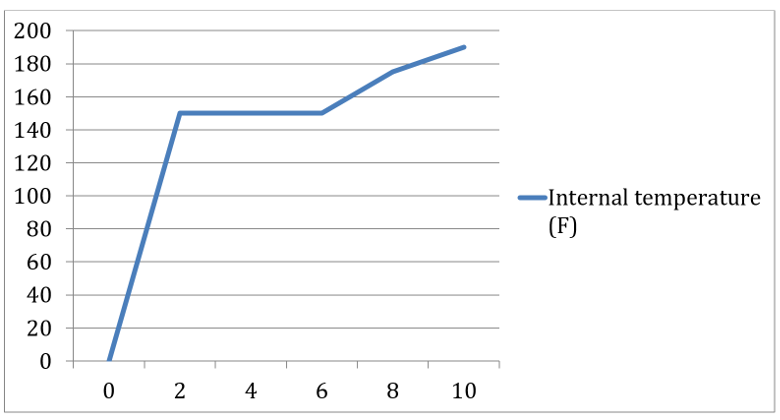
Here we see the temperature rising steadily for the first couple of hours until about 150F. From there it levels out and holds for many hours. Once the moisture is gone and evaporative cooling ends, the temperature climbs again until it reaches our target in and around 200F.
Many factors contribute to the length of the stall. The size and shape (and hence the surface area) of the meat play a role, as does the internal composition of the cut. The humidity outside will also factor in, so you may experience shorter stalls on dry days versus sticky ones.
How to Beat The Stall
Now that you know what the stall is, you understand that it will pass every time. Fortunately, only the moisture closest to the surface is drawn out for evaporation. Deep inside the cut, proteins, collagen, and fat greedily cling to reservoirs of moisture. Even if you wait out the stall, you still won’t dry out your meat.
Unfortunately, it’s hard to know how long that might take, making it very difficult to set dinner plans. Plus, who wants to stand around waiting when you could be eating mouth-watering brisket?
Here are a couple of ways you can “beat” the stall and speed up your cooking time.
Aluminum Foil/Texas Crutch
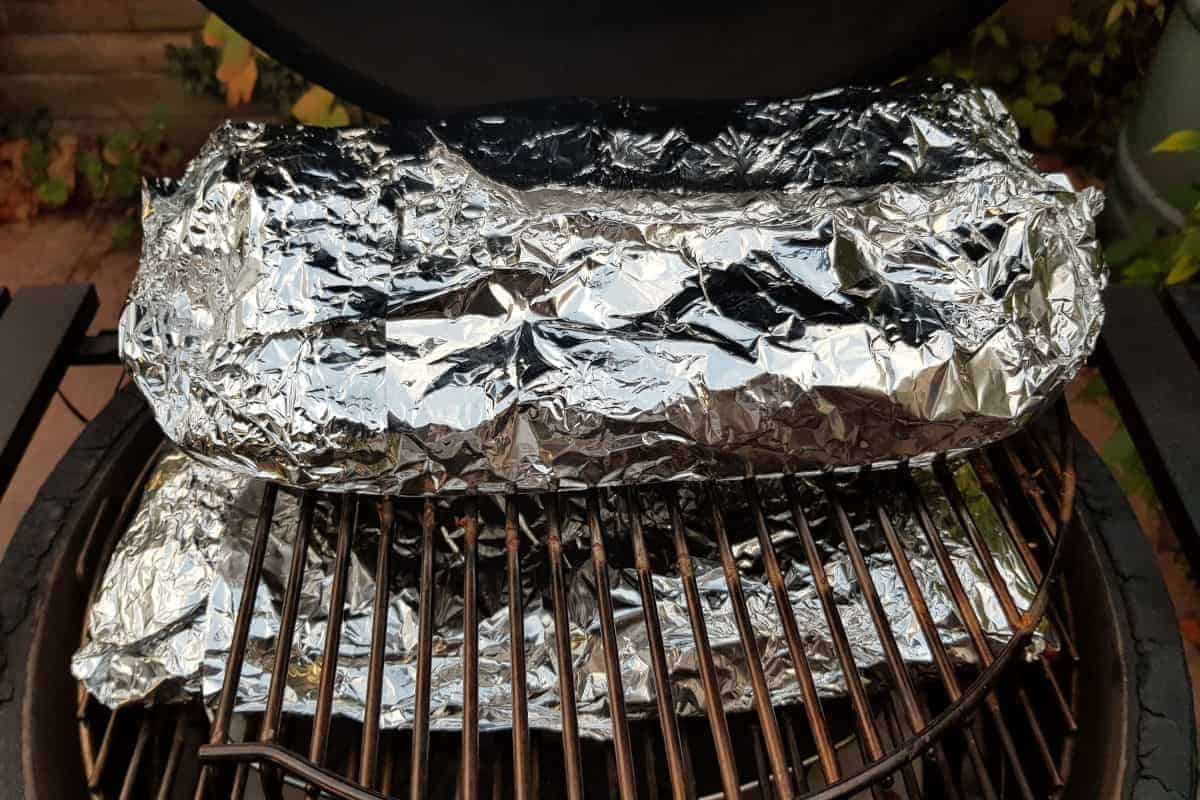
Texas Crutch must be one of the most famous terms in all of barbecue.
In a nutshell, the trick is to wrap your lovely meat in aluminum foil at just the right time, add a bit of fluid, and then stick it back in the cooker. (“I thought it was going to stall, so I let out the crutch!” You can use that one next time you’re looking for some grilling humor to amuse your guests.)
Of course, there’s a lot more to it than that. That’s why we have an entire article devoted to this critical topic. If you want to break away now and check it out, be our guest: A guide to the Texas Crutch.
Pink Butcher Paper
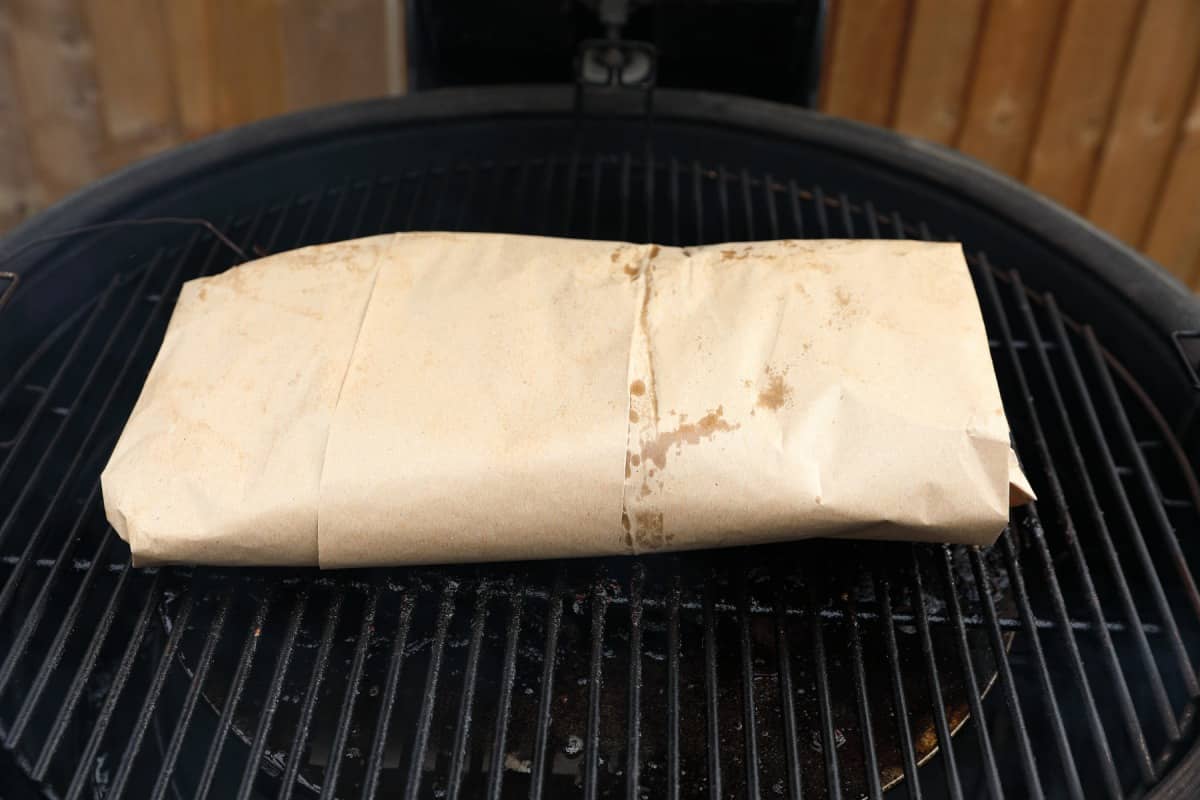
Using pink butcher paper is a bit like performing a Texas Crutch. (Sounds like a line-dance move, doesn’t it?) Following the same technique, you pull the meat out of the cooker at the beginning of the stall, wrap it up, and put it back.
The advantage of butcher paper over foil is it can breathe. Smoke and heat pass through, imparting flavor and building up the bark.
It’s not going to speed up cooking time quite as dramatically as foil, so you won’t quite “beat” the stall with pink butcher paper. But you will fight it to a tasty draw. Wrapping in pink butcher will speed the time taken to get through the stall by quite an amount.
Seal Your Smoker Tight
Most smokers lose plenty of heat and smoke to the outside environment. And if stuff is going out, that means stuff is going in, too. That includes moisture in the air.
If your smoker is tightly sealed (some electric smokers are pretty tight), you may experience considerably less stall than on a “drafty” cooker.
If you see obvious gaps in your smoker, you can fill them with gaskets and other high-temperature friendly products.
Be warned, though, that the results may be detrimental to the formation of bark on your meat.
Raising the Temperature
The stall has been shown to be a low-temperature phenomenon that is unique to low ‘n’ slow cooking. You never see this happening during a medium— or high-temperature cook.
With that in mind, some chefs are cranking it up as high as 300-350F, far above the traditional brisket or pork shoulder temperature of 225F. Anecdotal evidence suggests that this completely negates the stall and dramatically speeds up cooking time.
Although I am a bit skeptical of this method for smoking, anything is worth a try once, especially for 4-hour brisket.
Nothing is Going To Stop Us Now
The key to solving any problem is first to seek to understand it. Ok, that sounds like it’s right out of some awful self-help book, but it’s true. Now that you know what the stall is, the next time it happens, you will expect it and won’t panic.
We hope this explanation of the stall and the tips for getting past it prove useful, and that you have many successful low ‘n’ slow sessions in your future!
Got any friends fighting the stall, or know anyone who is just getting into low ‘n’ slow barbecue? Be a pal and send them to this article.
If you’re in the sharing mood, please share your thoughts and stories with us in the comments below. Tell us what you like and don’t like about the site. Reveal your barbecue secrets. You can even suggest topics you’d like to see covered. We’re real people here, folks, and we’re always ready to talk to our readers!
Thanks for stopping by, and may the good ‘cues be yours.
Happy grilling!


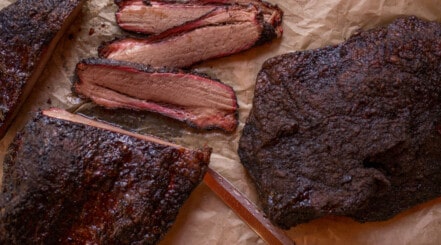

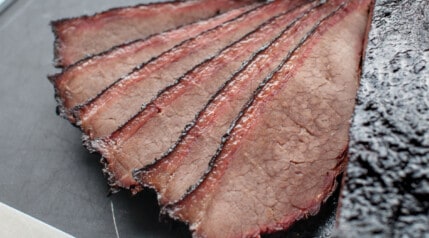
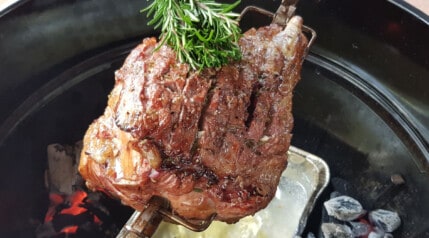
Sitting in the Philippines 96% humidity hot smoking and first time I’ve hit the dreaded stall found your article which saved what sanity I have left
“96% humidity” sounds awful! Extreme heat with no ability to sweat doesn’t suit me very well!
I am a smoker novice. How long should it take me to smoke a 16lb brisket at 250 degrees in an electric smoker? At what temperature should I wrap the brisket in butcher paper (165 degrees)? How often should I spray with apple juice or apple cider vinegar? Based on your earlier comments, seems that I would only add wood chips (I’ll probably use post oak), for first 6 hrs or do I continue to add wood chips until I wrap the brisket even that’s 8 or more hrs into the cook? What’s the ideal temp for a completed brisket, some say 190, other 195 or even higher than 200? How long should I let the brisket rest before cutting? thanks
Hi Jay,
That is way too many questions to answer in a comment here. Please use the search function in the menu at the top of the this site, and search for ‘brisket’, we have many articles that answer all these questions.
Thank you for a well explained article. I thought I was going nuts or doing something wrong. Can you tell it was my first 10 pound Traeger-smoked pork shoulder? Hope the apple pellets, apple juice and apple cider vinegar do the trick. Still waiting to get past the stall. 166 onward at 350. Started at 225 for 9 hours. Doesn’t help it’s 20 degrees outside.
Thanks for this. Smoking my first shoulder at 225 and it’s been stuck at 168-170 for what seems like forever. Just wrapped it at 11 hours. Was stressed as most of the recipes I’ve looked at says a 5lb shoulder should be done in 6-9 hours. I used a pan of water so I’m thinking that may have contributed to the stall. Will plan for 18 hours as noted by another poster.
mark, thanks for the informative article on the “STALL”. i use an electric smoker and i had two stalls.one at 140ish, and one at 190. the pokr butt (8pounds) would not go higher than 190 degrees
more on previous comment, ( i hit the wrong button ). anyway, my pork butt hit 190 degrees and would not go any higher. i left it in the smoker for 18 hours, (wrapped in butcher paper since the 140 degree stall .then put it in the cooler wrapped in the butcher paper and a towel overnight. it never got 0ver 190 degrees, but it was perfect!!! so i guess you can say there is a “second stall”. you will never reach the 203 degree “sweet spot”, but using the Texas Crutch and resting in the cooler over night it will be good. it was still warm and the bark was still crunchy.
Wish you were around 30 years when that stall showed it self. First Brisket was a nightmare. Still not fond of brisket.